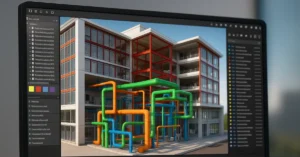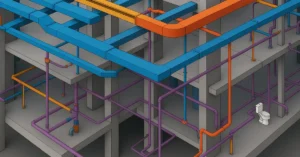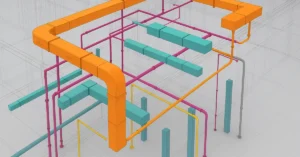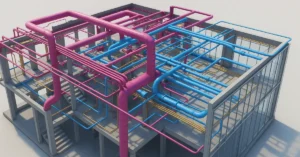Unlocking the Potential: Plugin Development for Architects

In today’s rapidly evolving world of architecture and design, technology plays a pivotal role in shaping the future of the industry. Architects are constantly seeking innovative tools and methods to streamline their work processes, improve efficiency, and enhance the quality of their designs. One way to achieve these goals is through plugin development. In this article, we will explore the exciting realm of plugin development for architects and how it can revolutionize the way architects work and create.
The Role of Plugins in Architecture
Plugins are software components that can be added to existing software applications, enhancing their functionality. In the context of architecture, these plugins can be integrated into popular design and modeling software like AutoCAD, SketchUp, or Revit. They can cater to a wide range of tasks, from simplifying repetitive tasks to adding new features, ultimately saving architects time and increasing productivity.
Streamlining Workflows
One of the primary benefits of plugin development for architects is the ability to streamline workflows. Architects often find themselves performing repetitive tasks, such as creating standard structures, generating reports, or rendering 3D models. With the right plugin, these tasks can be automated, allowing architects to focus on more creative aspects of their work. For example, a plugin could automate the creation of complex parametric designs, saving hours of manual work.
Customization and Specialization
Every architectural project is unique, and architects need tools that can be tailored to their specific needs. Plugin development allows architects to create custom solutions that address their individual requirements. This customization not only improves efficiency but also enables architects to explore innovative design possibilities that are often limited by off-the-shelf software.
Integration with Industry Standards
Architects frequently collaborate with other professionals, such as engineers and interior designers. To facilitate seamless collaboration, plugins can be developed to ensure compatibility and data exchange between different software applications. This ensures that architects can work in harmony with other team members, resulting in a more integrated and efficient project.
Popular Plugin Platforms for Architects
If you’re an architect interested in plugin development, several platforms offer extensive support and resources. Some of the most popular ones include:
1. Autodesk Forge
Autodesk Forge is a powerful platform for developing plugins that integrate with Autodesk software like AutoCAD and Revit. It provides a range of APIs and tools that make it easier for architects to create custom solutions for their projects.
2. SketchUp Ruby API
For architects who prefer SketchUp, the Ruby API offers extensive capabilities for extending the functionality of the software. Architects can develop Ruby scripts to automate tasks and create new tools within SketchUp.
3. RhinoCommon
Rhino, a popular 3D modeling software, has its own API called RhinoCommon. Architects can use this platform to create custom commands, tools, and extensions for Rhino, making it a versatile choice for plugin development.
4. Grasshopper
Grasshopper is a popular visual programming language for architecture and design. Architects can develop plugins to extend Grasshopper’s capabilities and create parametric designs and algorithms.
Steps to Get Started with Plugin Development
If you’re eager to explore the world of plugin development for architects, here are the essential steps to get you started:
1. Define Your Needs
Before diving into plugin development, identify the specific challenges or tasks you want to address. Understanding your needs will guide the development process and ensure your plugin is tailored to your requirements.
2. Choose a Platform
Select a platform or software that you are comfortable with and that aligns with your project needs. This choice will determine the programming language and tools you’ll need for development.
3. Learn the Programming Language
Most plugin development requires knowledge of programming languages like Python, C#, or Ruby, depending on the platform you’ve chosen. Take the time to familiarize yourself with the language and its syntax.
4. Access Documentation
Each platform provides extensive documentation and resources to support developers. Dive into the documentation to understand how to create plugins, access APIs, and build extensions.
5. Start Small
Begin with a simple project to get the hang of plugin development. As you gain experience, you can tackle more complex challenges and create plugins that cater to your specific needs.
6. Test and Iterate
Thoroughly test your plugins to ensure they work as intended. Don’t be afraid to iterate and make improvements based on feedback and your own experience using the plugins.
7. Share and Collaborate
Once you’ve developed useful plugins, consider sharing them with the architectural community. Collaboration can lead to valuable feedback and further refinement of your creations.
The Future of Plugin Development in Architecture
As technology continues to advance, the role of plugin development in architecture is set to become even more significant. Architects will rely on plugins to enhance their design processes, create sustainable and innovative structures, and streamline project management. Furthermore, the community of architects and developers collaborating on plugins will continue to grow, fostering creativity and innovation.
Conclusion
In conclusion, plugin development for architects represents an exciting frontier for those who want to embrace technology and enhance their design capabilities. By creating custom solutions, streamlining workflows, and fostering collaboration, architects can look forward to a future where they can fully unlock their creative potential.
Whether you’re a seasoned architect looking to optimize your workflow or a budding architect with a passion for technology, plugin development is a valuable skill to acquire. It’s a journey that can revolutionize the way you approach architecture and design, ultimately shaping a more efficient and innovative future for the industry.
If you’re interested in learning more about architecture firms in Europe, check out this comprehensive list of the top 50 firms compiled by Archgyan. From innovative startups to long-established industry leaders, this list has it all. Take a look and discover some of the most inspiring and influential architecture firms in Europe today.
If you’re interested in architecture and want to learn more about this amazing field, subscribe to our podcast on youtube
For more SketchUp tutorials, head to https://www.sketchupguru.com










